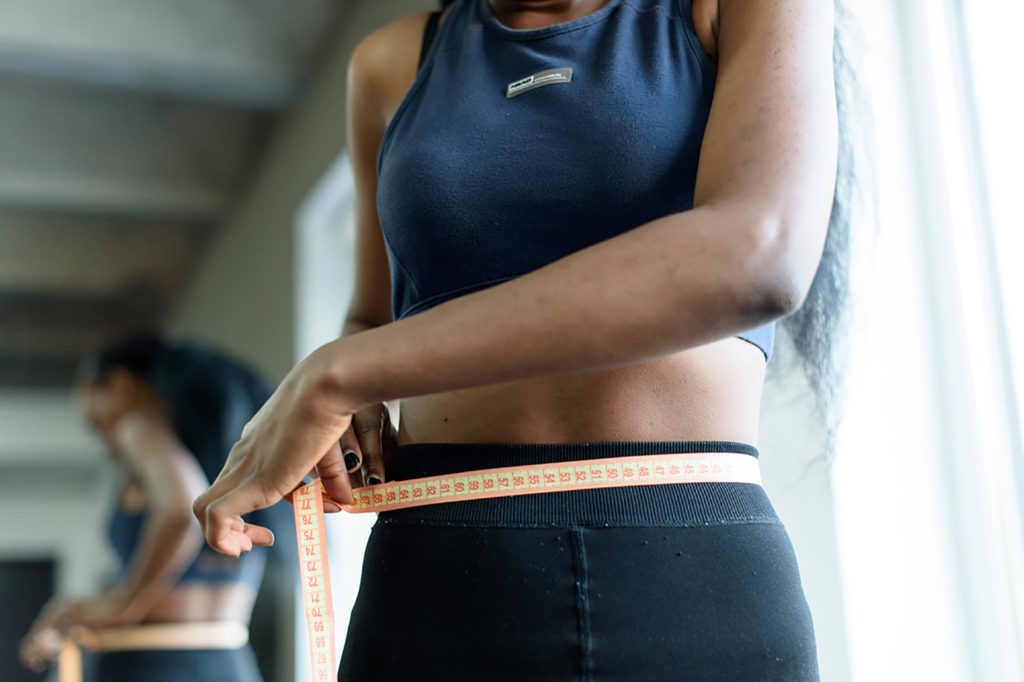Do any of these sound familiar?
Do you head to gym every day at 6am, no matter what? Be honest. Do you haul yourself out for a run even if it’s pouring with rain, you’re injured or down with flu? Are you only happy when you’re training for the next triathlon and is food merely the fuel that gets you through your next training session? If so, you could be suffering from something known as compulsive exercise disorder. Now you might be lying on the couch thinking, If only… but the reality can be, quite literally, crippling.
“Compulsive exercise disorder is a craving for leisure-time physical activity, which results in uncontrollable excessive exercise behaviour,” explains exercise physiologist and Women’s Health fitness advisor Dr Lisa Micklesfield. “It manifests in physiological symptoms, like withdrawl, and psychological symptoms, like anxiety or depression.”
What’s The Big Deal?
If you push your body too hard and don’t give it the fuel it needs to sustain the amount of exercise you’re doing, your efforts will be counterproductive. So if, for example, you’re not eating enough carbohydrates and fats to give your body the energy it needs, then “the dietary protein and tissue proteins in your body will be broken down to provide the energy needed,” says Pietermaritzburg-based dietician Danielle Beaumont. “This results in muscle loss, therefore weakness instead of strength.” Which isn’t why you’re exercising, right?
Along with weaker muscles, you might start to suffer from insomnia, fatigue, aching muscles and joints, and headaches. Your resting heart rate will become elevated, your appetite could decrease and you’ll be more susceptible to getting a sore throat or cold. This happens because your body is using more energy than it’s taking in, explains Micklesfield, so it tries to restore the balance by decreasing the amount of energy it uses for other important processes, like thermoregulation and reproduction.
Too much exercise, which could be combined with a very low body fat percentage, can cause your period to become irregular or stop altogether. This can lead to decreased bone mineral density and, eventually, osteoporosis. “If the diet is too low in fats for the amount of exercise that’s being done, there is also the risk of an omega-3 and -6 deficiency,” explains Beaumont. “This is a problem as these essential fatty acids are needed for the production of prostaglandin, which regulates things like smooth muscle contraction and pancreatic and blood pressure functioning.”
Get The Balance Right
Compulsive exercisers tend to have goal-orientated personalities. Exercise is a way to push the limits and the reward is the serotonin high, that rush of endorphins that makes you feel like queen of the world. However, wanting your routine to provide a challenge doesn’t mean you’re heading towards the downward spiral of addiction. As with everything in life, it’s all about balance.
So, what does a balanced exercise programme look like? Micklesfield suggests you aim for something like this:
Monday 30 to 40 minutes of cardio at a moderate to vigorous intensity (70 to 85 percent of your maximum heart rate).
Tuesday Rest
Wednesday Strength training programme working upper body, including four to six upper body exercises, and abdominal training.
Thursday 30 to 40 minutes of cardio at a moderate to vigorous intensity (70 to 85 percent of your maximum heart rate).
Friday Strength training programme working lower body, including four to six lower body exercises, and abdominal training
Saturday Rest
Sunday 30 to 40 minutes of cardio at a moderate to vigorous intensity (70 to 85 percent of your maximum heart rate)
What Should You Eat?
Of course, you’ll need to eat correctly to fuel your body and sustain your energy levels. “If you weigh 65kg and are working out to improve fitness and maintain your weight, you should consume around 7500kJ a day,” says Keri Strachan, a dietician with a special interest in sports nutrition from the Centre for Sports Medicine in Umhlanga. With that in mind, and assuming your fitness routine is similar to the one suggested by Micklesfield, Strachan suggests your daily eating plan consists of the following:
Pre-exercise snack: 100ml low-fat yoghurt + 1 small banana
Breakfast: 1 cup All-Bran Flakes + 250ml low-fat milk + 1 tbsp raisins + 1 tbsp almonds
Mid-morning snack: 3 Provitas + 2 tsp peanut butter, heaped
Lunch Tuna salad sandwich: 2 slices low-GI bread + 1/3 tin tuna (30g) + lettuce, tomato and cucumber + 1 tbsp low-fat mayonnaise (Trim or Miracle Whip Lite).
Mid-afternoon snack: ½ pita bread + ¼ large avocado with sliced tomato and cucumber .
Supper Chicken stir-fry: 1 cup cooked rice + ½ skinless chicken breast (60g cooked) + 3 large serving spoons stir-fried vegetables (cabbage, carrots, mangetout, mushrooms, bean sprouts, peppers) + 1 tsp oil to cook with.
After-dinner snack: 100ml low-fat yoghurt + ½ cup chopped fruit salad + 1 tbsp seeds.
Plus: 250ml low-fat milk for use in hot drinks through the day (4-5 cups tea or coffee) + up to 3 tsp sugar, Milo, Nesquik, jam, honey or syrup per day.
How Much Is Too Much?
Exercise should not be an obligation and, according to research compiled by the Massachusetts Eating Disorder Association, if it starts to become more important than your other duties, you need to ask yourself these 5 questions (answer yes to them, and chances are you could be suffering from an exercise disorder):
Do you burn more than 14 500kJ per week?
Do you exercise even with an injury?
Do you feel guilt- and anxiety-stricken when you’re not able to exercise?
Do you avoid other responsibilities in order to exercise?
Is your happiness based on how productive your workout was and not on other things?
This is secretly the best move for toning your inner thighs. Plus: “I put on a Fitbit – here’s why my life will never be the same again…”
Fuente: www.womenshealthsa.co.za
